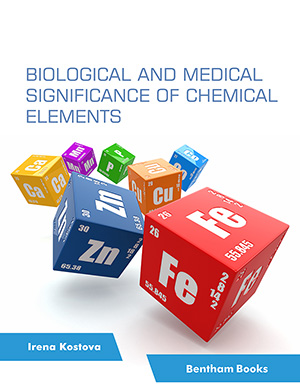Abstract
Introduction: A simple and inexpensive differential calorimetric sensor for rapid hydrogen peroxide (H2O2) quantification in industrial solutions was developed, characterized and validated. An earlier method proposed by the authors, on which the developed sensor is based, was enhanced, allowing overcoming the issues with its practical application. Thus, the following goals were achieved: a response time of 195 s from sampling to the analytical result; the elimination of the influence of initial sample temperature on the precision of the result by a differential mode of measurement application; the elimination of the result precision degradation caused by the parasitic heat produced by the sample stirrer. A linear quantification range from 0.05 to 1.5 mol L-1 H2O2 with a limit of detection (LOD) of 0.035 mol L-1 H2O2 was reached by applying disposable catalyst holders with a lifetime of more than 50 quantifications. The catalyst surface area to sample volume ratio adjustment allows the sensor’s analytical characteristics adaptation to the industrial-technological process requirements.
Background: Hydrogen peroxide is used as a reagent in the technological processes of several industrial branches, and the simple and fast monitoring of its concentration is critical for the maintenance of technological process stability. The common disadvantages of the existing sensors are the complex and long measuring procedures requiring sophisticated equipment and qualified personnel.
Objective: This study’s objective is the development of a simple and inexpensive calorimetric sensor and measuring instrument for rapid H2O2 quantification in industrial solutions by nonqualified personnel. The sensor is based on the significant improvement of the reagent-less calorimetric method proposed by the authors earlier, allowing its simple and precise practical application. Drawbacks such as the result of precision degradation by the initial sample temperature and by parasitic heat production during the measurement were overcome by obtaining an economical, simple, rapid, and precise sensor.
Methods: The temperature increase resulting from the heat generated during the catalytic H2O2 decomposition was recorded as a sensor response. A simple and inexpensive disposable acrylic ring covered by MnO2 serves as a specific catalyst for H2O2 decomposition. The sensor analytical characteristics were evaluated, and permanganate approach validation was conducted.
Results: The developed sensor showed a linear response to H2O2 from 0.05 to 1.5 mol L-1 with a LOD of 0.035 mol L-1 and LOQ of 0.115 mol L-1 under optimized experimental conditions. The catalyst surface area to sample volume ratio adjustment allows the sensor’s analytical characteristics adaptation to the industrial process requirements. The results were validated using the permanganate approach application, obtaining recovery values of 98.7%-101.4%.
Conclusion: A simple and economic calorimetric sensor for quick hydrogen peroxide quantification in industrial solutions was developed, characterized, and validated. Disposable catalyst-loaded rings were employed allowing 50 successive quantifications of 1 mol L-1 H2O2 with a relative error of 1.08%. The sensor construction enables easy catalyst replacement and adjustment of its analytical characteristics to the industrial technology requirements using catalyst rings with various catalyst surface areas.
Keywords: Differential calorimetric sensor, catalytic H2O2 decomposition, MnO2 catalyst, disposable catalyst ring, spectrophotometry, amperometry.
[http://dx.doi.org/10.4236/ajac.2011.28101]
[http://dx.doi.org/10.1016/j.talanta.2004.10.001] [PMID: 18969966]
[http://dx.doi.org/10.1039/c3ay26329k]
[http://dx.doi.org/10.1021/ja01184a098] [PMID: 18915785]
[http://dx.doi.org/10.1016/j.talanta.2010.03.063] [PMID: 20685440]
[http://dx.doi.org/10.1016/j.cej.2010.11.068]
[http://dx.doi.org/10.1006/abio.1997.2391] [PMID: 9367498]
[http://dx.doi.org/10.1016/j.talanta.2007.01.072] [PMID: 19071772]
[http://dx.doi.org/10.1016/0039-9140(76)80158-0] [PMID: 18961924]
[http://dx.doi.org/10.1038/s41598-021-82623-4] [PMID: 33536535]
[http://dx.doi.org/10.1080/10739149.2013.773448]
[http://dx.doi.org/10.1080/10739149.2015.1043637]
[http://dx.doi.org/10.1080/00032719.2018.1428986]
[http://dx.doi.org/10.1080/10739149.2017.1410488]
[http://dx.doi.org/10.2174/1573411017666210520153409]
[http://dx.doi.org/10.1016/j.talanta.2017.04.055] [PMID: 28551151]
[http://dx.doi.org/10.1080/10739149.2021.2013876]
[http://dx.doi.org/10.1021/ac00090a020]
[http://dx.doi.org/10.1149/1.2086825]































